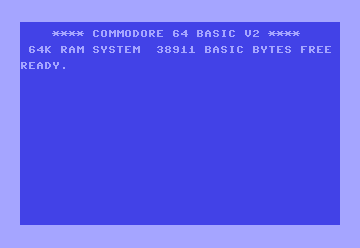
POS: Your Cursor's GPS
Ever wanted to know exactly where your cursor is on the Commodore 64 screen? Look no further than the POS command, your cursor's GPS! This handy function tells you the current horizontal position of the cursor within the current line of text. It's like having a built-in tracking device for your text cursor!
Syntax
POS(<dummy argument>)
Where:
- <dummy argument>: Any numeric value or variable (it's ignored by the command). This is a quirk of BASIC, so just pick a number like 0 or 1.
Applications
The POS command is surprisingly versatile and can be used for:
- Aligning text: Determine where to insert spaces or tabs to create neatly organized output.
- Creating dynamic displays: Position text elements precisely on the screen for menus, status bars, or visual effects.
- Building text editors: Track the cursor's position for editing and navigation within text documents.
- Debugging: Check the cursor position during program execution to diagnose display issues.
Code Examples
1. Simple Cursor Position Check:
10 print "hello, world!" ; pos(0) :rem output: 13 (assuming no leading spaces)
This example prints the cursor position after printing the string "Hello, world!".
POS in the Wild: The Text-Based Interface Builder
Imagine you're creating a text-based adventure game with a status bar at the bottom of the screen. You could use POS to dynamically update the status bar with the player's health, score, or inventory information, ensuring it's always displayed in the correct position.
Don't let your cursor get lost! With POS, you can always know its exact location on the screen, giving you precise control over your text output and display layouts. It's a simple yet powerful tool that can enhance your Commodore 64 programming skills and add a touch of polish to your creations. So embrace the magic of POS and let your cursor navigate with confidence!
Key Points to Remember:
POSreturns the cursor's horizontal position, starting at 0 for the leftmost column.- The maximum value returned by
POSdepends on the current screen mode and line length. - You can use
POKEto directly set the cursor position (e.g.,POKE 646, 10moves the cursor to column 10).
